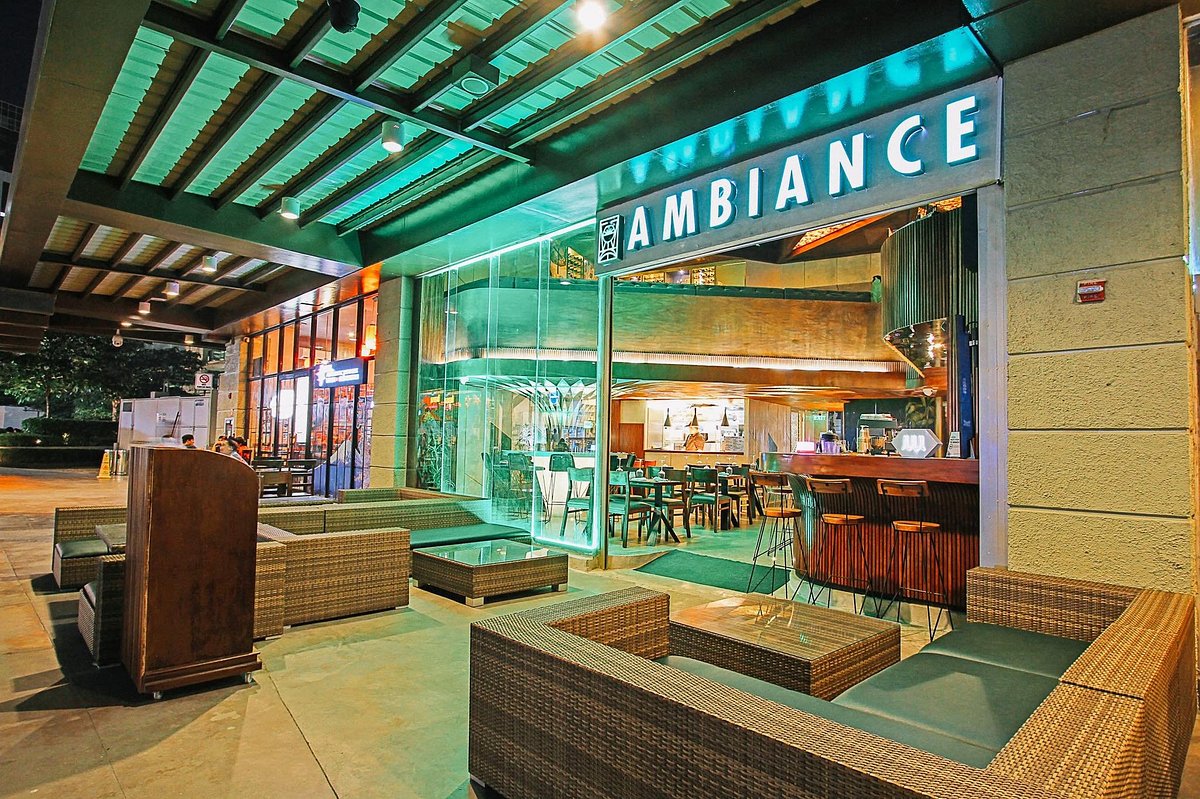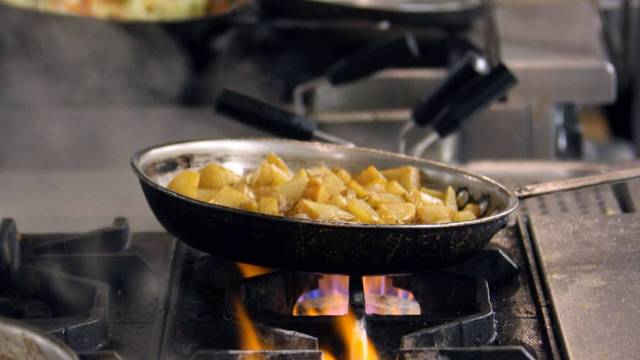Pan Asian Restaurant Islamabad: Discover Exquisite Asian Food
Wiki Article
Savor Genuine Oriental Food With a Pan-Asian Spin for a Culinary Experience
Beginning on a cooking journey with authentic Asian cuisine, enhanced with a Pan-Asian spin, uses a special opportunity to explore the abundant tapestry of tastes that specify the region's varied cooking customs. As you contemplate these luring recipes, think about the social stories and historical impacts that shape them, each bite supplying a tale waiting to be found. best asian restaurant Islamabad.
Discovering Pan-Asian Tastes
In the world of international gastronomy, Pan-Asian cuisine sticks out for its remarkable variety and the harmonious interplay of flavors from numerous Eastern societies. This culinary technique celebrates the distinct components and abundant customs discovered throughout the continent, developing a tapestry of tastes that is both gratifying and fascinating. Key to Pan-Asian cuisine is its capability to balance contrasting flavors-- pleasant, salted, spicy, and sour-- while highlighting the quality and quality of each ingredient.From the umami-rich soy sauce of Japan to the fiery chili peppers of Thailand, Pan-Asian cuisine supplies a considerable palette of flavors. These components are typically combined in innovative means, improving meals with layers of complexity. For example, the usage of fragrant natural herbs such as lemongrass and cilantro, typical in Vietnamese and Thai food, adds a revitalizing illumination to dishes, while the unification of coconut milk provides a luscious, rich appearance.
The emphasis on fresh produce and aromatic seasonings guarantees that each dish is not only a feast for the taste but likewise for the detects. Pan-Asian food welcomes diners to embark on a culinary trip, exploring the large and differed landscapes of Oriental gastronomy with every bite.
Blend Recipes to Try
While Pan-Asian cuisine is celebrated for its standard flavors, the modern culinary landscape is increasingly welcoming fusion dishes that blend these timeless aspects with influences from various other areas. This ingenious approach not just honors the rich heritage of Eastern cookeries but also introduces unique preference experiences that attract modern tastes buds.
A prime example of such a combination meal is the Korean-Mexican taco, where marinated bulgogi beef is covered in a cozy tortilla, topped with kimchi and a spicy gochujang-infused salsa. This mix marries the strong, full-flavored flavors of Korea with the dynamic, fresh aspects of Mexican food. In a similar way, sushi burritos have obtained popularity, amalgamating the delicate creativity of Japanese sushi with the hearty, hand-held comfort of a burrito, typically featuring blend ingredients like tempura shrimp and avocado with a drizzle of wasabi mayo.
An additional notable recipe is Thai curry ramen, which instills the luscious, aromatic flavors of Thai curry right into the reassuring brew of traditional Japanese ramen, creating an unified mix that tantalizes the senses. These fusion recipes prolong beyond plain uniqueness; they stand for a culinary discussion in between societies, urging exploration and innovation on the planet of Pan-Asian food.
Important Active Ingredients and Spices
To genuinely value Pan-Asian food, one must recognize the necessary components and seasonings that develop its structure. This diverse cooking style draws from a rich tapestry of Asian practices, utilizing a harmonious mix of flavors and appearances.Fragrant components are essential, with ginger, lemongrass, find more and garlic being common across different Pan-Asian dishes. These active ingredients offer an aromatic base that boosts the intricacy of flavors. Spices such as celebrity anise, cardamom, and cinnamon introduce heat and character, resembling influences from regions like China and India.

Cooking Techniques and Tips
Mastering the art of Pan-Asian cuisine requires experience with its distinctive food preparation strategies, each contributing to the vibrant tapestry of flavors this cooking custom is commemorated for. Central to these techniques is the stir-fry, a quick food preparation strategy that maintains the nutritional honesty and dazzling shades of ingredients. Using a frying pan, the stir-fry method enables even warm distribution, essential for accomplishing the characteristic structure and flavor balance of Pan-Asian dishes.An additional essential method is steaming, especially widespread in Chinese cuisine. This mild method maintains the all-natural flavors and nutrients of active ingredients, making it ideal for fish and shellfish and veggies. Dumplings, a cherished staple, frequently take advantage of steaming, resulting in soft, delicious textures.
Barbecuing, additionally integral, imparts great smoky midsts to meals such as Oriental bulgogi or Japanese yakitori (Chinese food Islamabad). This method typically includes marinating ingredients, allowing flavors to permeate deeply prior to cooking over an open flame or hot plate
Lastly, understanding the art of stabilizing flavors-- pleasant, sour, salted, bitter, and umami-- is crucial. Correctly layering these elements can raise a recipe from ordinary to remarkable, providing a complex and satisfying cooking experience that personifies the essence of Pan-Asian food.
Eating Experiences Worldwide
Across the world, Pan-Asian food uses an unparalleled eating experience, celebrated for its rich tapestry of flavors and vivid discussions. This cooking click for more info sensation has actually transcended cultural limits, capturing the hearts and tastes of food fanatics worldwide. In worldwide cities like New York, London, and Sydney, Pan-Asian dining establishments serve as melting pots where cooking practices from Thailand, Japan, China, and past assemble, providing diners with a diverse mix of recipes that highlight the region's variety.The global appeal of Pan-Asian cuisine hinges on its capability to provide both authenticity and innovation. Cooks masterfully marry standard active ingredients such as lemongrass, soy sauce, and miso with modern strategies, resulting in meals that are both refreshingly new and acquainted. This blend enables diners to embark on a cooking journey that values heritage while embracing modernity.
Additionally, dining experiences are elevated through thoughtfully created settings that reflect the principles of Pan-Asian aesthetics. From minimalist Japanese-inspired insides to vibrant Thai-themed areas, each dining establishment supplies an one-of-a-kind ambiance that complements the cooking offerings. As a result, patrons are not simply taking in a meal but partaking in a cultural experience, making Pan-Asian eating a truly international phenomenon.
Final Thought
The expedition of Pan-Asian cuisine offers an extensive understanding of the detailed interplay of flavors and culinary traditions throughout Asia. By welcoming fusion dishes such as Thai curry ramen and sushi burritos, the culinary trip not just highlights the flexibility of conventional components but also showcases ingenious modern-day strategies. This gastronomic adventure, enhanced by necessary seasonings and cooking techniques, supplies an one-of-a-kind possibility to appreciate the cultural variety and culinary creativity that specify Pan-Asian food on a global scale.Embarking on a cooking journey through authentic Oriental cuisine, enhanced with a Pan-Asian twist, offers an unique possibility to explore the abundant tapestry of flavors that define the area's varied culinary customs.In the realm of international gastronomy, Pan-Asian food stands out for its amazing diversity and the unified interaction of flavors from various Oriental cultures. Trick to Pan-Asian food is its ability to balance contrasting flavors-- sweet, salted, spicy, and sour-- while highlighting the quality and high quality of each component.

Report this wiki page